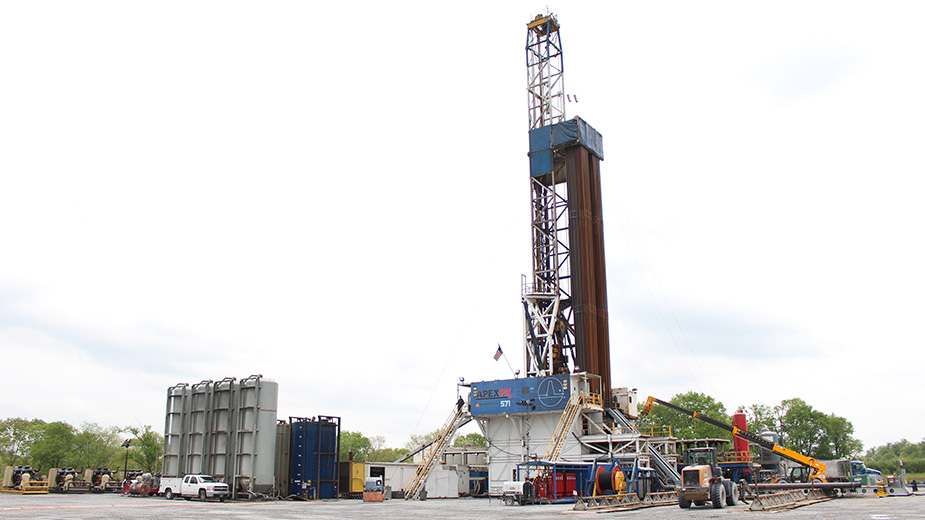Commentary: Utica Fuels Millions in New Tax Revenue
By Jackie Stewart, Energy in Depth
CANFIELD, Ohio – After just a handful of years in production, Ohio’s Utica shale is supporting initiatives at every level of the state’s government. From maintaining local municipal roads, increasing sales tax revenues, and bolstering county and school budgets; millions upon millions of the dollars generated from oil and gas development are being poured back into the state.
This week, the Akron Beacon Journal reported that the state has collected an additional $18 million from the oil and gas severance tax alone. This is a 752% increase in just the last five years. During this period, the largest jump in tax receipts was realized from fiscal 2014 to fiscal 2015, when revenues increased 261% , a 65% gain in just one year. Interestingly enough, even some of Ohio’s staunchest anti-fracking activists were taken aback by this news. Teresa Mills, spokeswoman for the based Center for Health, Environment and Justice, responded to the reported increase in tax revenue by saying: “Wow! That’s pretty amazing…I know there are more wells on line and producing more, but that severance tax total is still shocking. … It’s not disturbing but it is just really surprising.”
What’s also “pretty amazing” is the combination of increased severance tax revenue and other taxes generated from shale development. For example, last year Energy in Depth reported that three counties alone – Carroll, Columbiana, and Harrison – have collectively brought in over $10 million in new taxes over the past few years. At the same time, the state of Ohio received over $50 million in new sales tax revenue, thanks in large part to oil and gas development.
Just this week, I spent some time in shale-producing Monroe County, and the local county commissioners said shale has brought their county’s economy back to life after suffering a devastating plant closure. This plant was the largest employer in the county just a few years ago, and its closure meant that thousands of hard-working Ohioans were suddenly out of work, a development that sent the county into double-digit unemployment. Today, thanks to shale, the Monroe County has experienced sky-rocketing sale tax revenues, and is anticipating an additional $6 million from pipeline construction and operation.
“It’s hard to imagine what would have happened to Monroe County had the oil and gas industry not started to develop when it did,” said Monroe County Commissioner Mick Schumacker. “Our largest employer, Ormet, laid off thousands of workers, the oil and gas jobs allowed our residents and workforce to move right into alternative employment without being forced to leave home and uproot their families. Additionally, our county budget and funding for our schools would have been devastated, but thanks to shale, we were able to circumvent that situation entirely. We hope that with the new pipelines coming in and potential for greater development in our industrial park that we can see a rebirth in our county. The timing has been a real blessing for us all.”
Like other elected officials in Ohio, Monroe County officials are in talks to bring a new hotel, new grocery store, and more retail centers in as a result of the oil and gas development occurring along the Ohio River. As we know, throughout the last few years, hotels have been popping up all across eastern and southeastern Ohio, which has meant an increase in bed tax revenue for local governments. Take look at Cambridge where new hotels continue to be built in order to support the industry. In one year, the bed tax revenue generated in Cambridge increased by 60% going from $375,950 to $599,440 year-to-year. Even more astounding, in 2010, Marietta saw its bed tax revenue increase from $517,580 to $1,128,491.
Shale operators also continue to support millions in road repairs via the Ohio’s Road Use Maintenance Agreement (RUMA) program. This program is in addition to the ad valorem taxes also paid by Ohio operators. Energy in Depth recently conducted an economic analysis, which concluded that Ohio counties will receive an estimated $80 million in new tax revenues just from ad valorem taxes paid by operators over the course of the next few years. EID also recently reported projections from taxes yet to be realized from the entire pipeline infrastructure planned for the state, which once constructed and operating, will bring an estimated $256 million, per year.
Collectively the revenue generated from the ad valorem tax, severance tax, sales tax, tax that is incurred from RUMA’s, and anticipated tax revenues from pipeline infrastructure, means that the state is on pace to realize hundreds of millions in tax revenues.
While this week’s report on severance tax is “pretty amazing” it accounts for only one of the many taxes that are paid by the oil and gas industry in Ohio. These revenues fund our schools, infrastructure, and drive our local economy in ways that we have not experienced in decades.
Editor’s note: The author, Jackie Stewart, is employed by Energy in Depth.
Copyright 2024 The Business Journal, Youngstown, Ohio.


